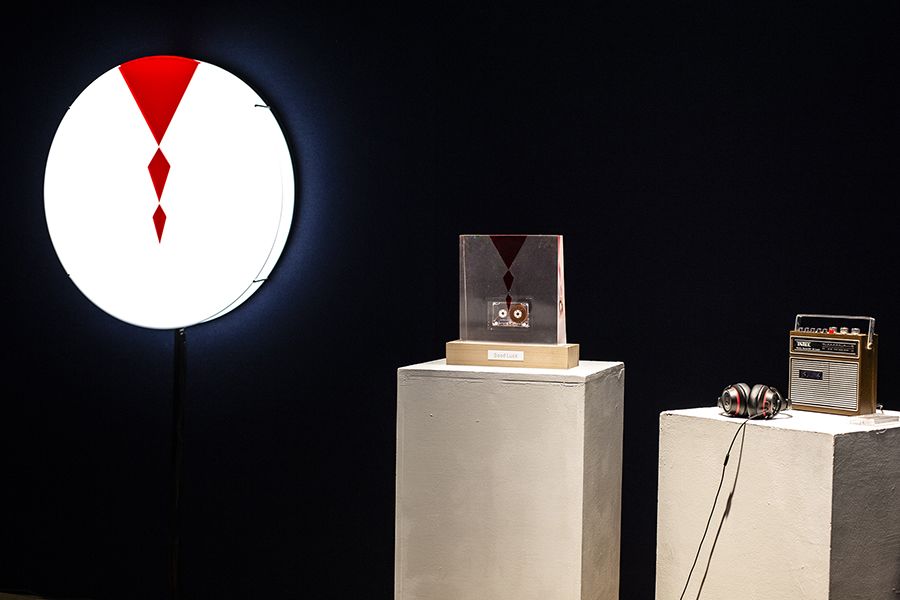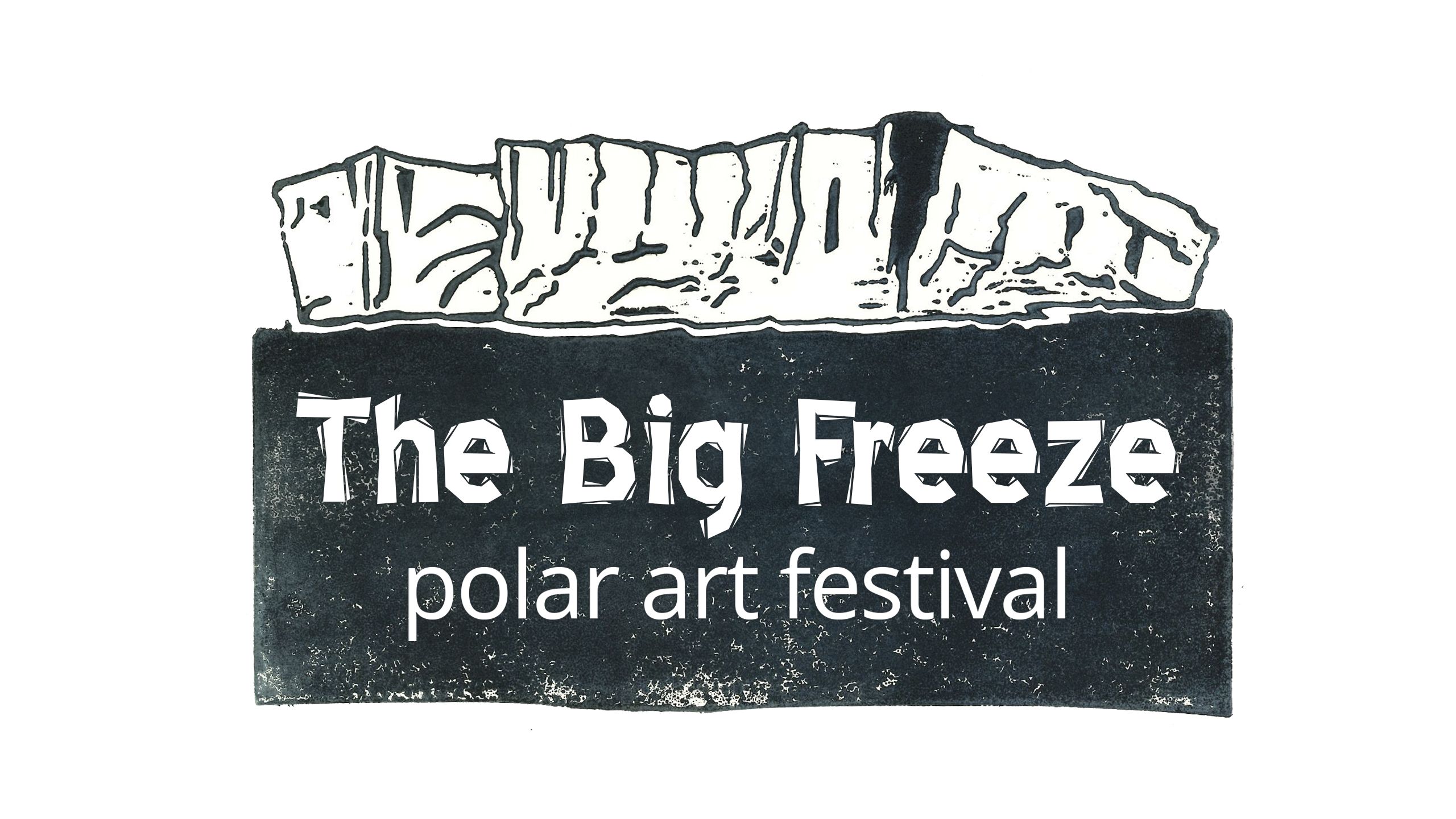
This time last year, the phrases self-isolation and social-distancing had just started to pepper our language as a global pandemic took hold. At the Polar Museum, we were looking ahead to an exciting centenary year, and a vibrant programme of exhibitions featuring work by artists who specialise in the polar regions, together with some of the remarkable material in our collections.
The Big Freeze festival, and this online exhibition, is our way of sharing some of that fantastic work. I hope you enjoy exploring at least as much as I enjoyed putting the exhibition together.
Charlotte Connelly
Museum Curator, The Polar Museum at the Scott Polar Research Institute, University of Cambridge
Sustenance
The opening section of the exhibition explores our place within the global and local ecosystems that sustain us.
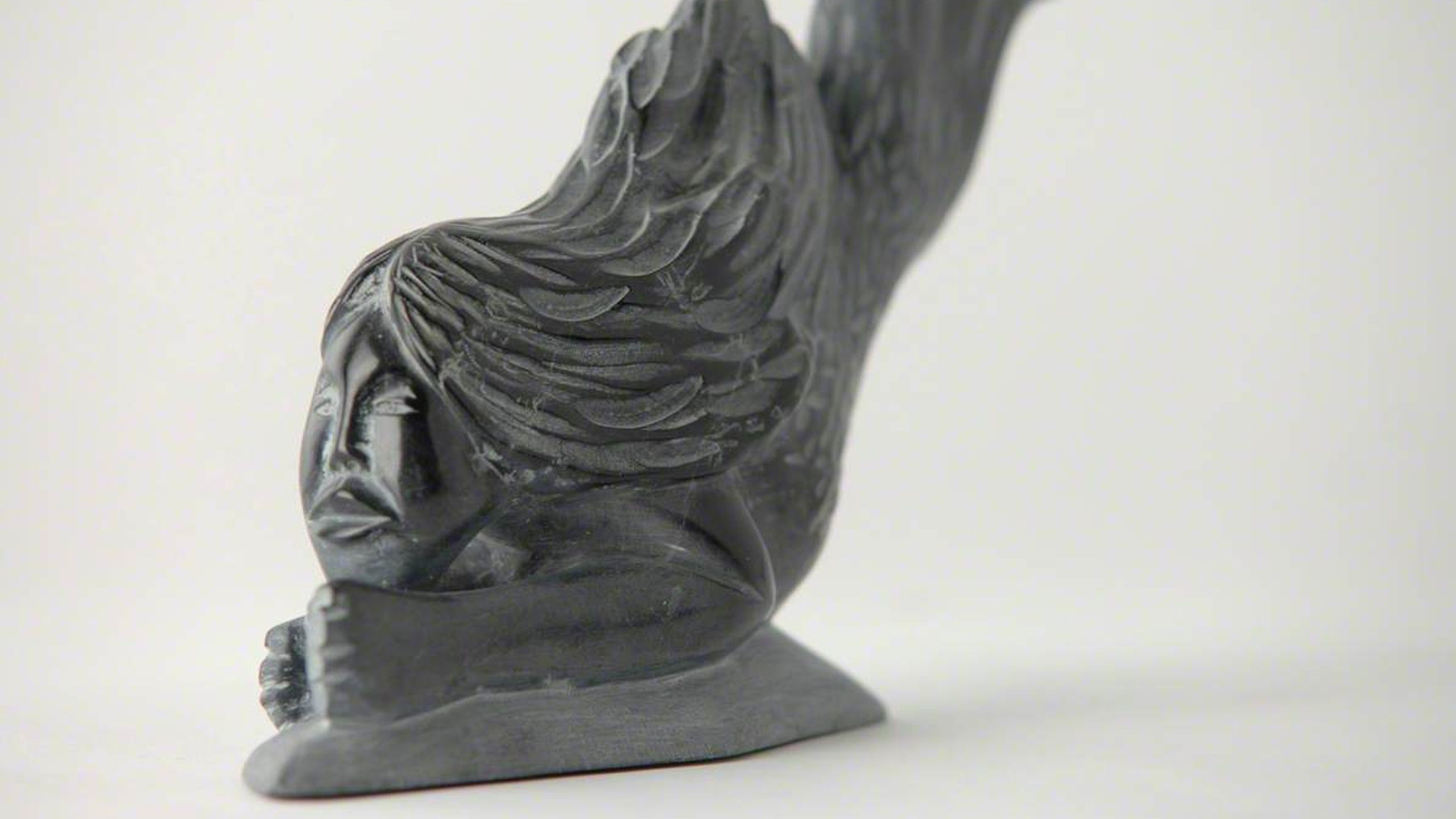
Arctic sea creatures are often the focus of artworks by Inuit artists. In this piece from the Polar Museum's collection, George Arluk uses a whale vertebra as part of his sculpture, Thinking of Flying (1997).
For Inuit living in the Arctic, whales are an essential source of nutrition and spiritual nourishment. They are central to life, and Inuit have shared their expertise about whale populations organisations such as the International Whaling Commission. Together they have agreed quotas that enable Inuit to continue harvesting whales as a sustainable, traditional food source.
In my Tikigaq culture it is believed that the spirit of the whale comes from the moon. In the 2017 whaling season, the village of Tikigaq caught 10 whales. We were 10 for 10, a quota set by the Alaska Eskimo Whaling Commission who works with the International Whaling Commission. This mask honours those whales that gave themselves to feed the community of Point Hope Alaska. I choose this particular mask because it ties to a historical time in Tikigaq. We were in Point Hope for this whaling season and took part in the hunt and the celebrations.
In stories of the past, a Shaman would captivate their audience by going into a trance state where it was believed they could transform and move between the different worlds of animals, people and spirits.
When I read about my ancestors and the subject is Transformation, I try to imagine what the audience sees. I interpret the image from a contemporary point of view and portray the idea and belief of Shamanism. I show you both sides of the transformation; the audience point of view and the Shaman shows his view, so you play a part in this transformation… Look at me… Look at you…
Whales are not the only precious animal in the Arctic. This ink stand was given to the Scott Polar Research Institute as a gift from the Arctic Institute in Leningrad, as it was then, in 1956. It comes from the Bering Strait region and was most likely carved by either Chukchi or Yupik artisans.
In the late nineteenth century, when traders and whale-hunters appeared in increasing numbers in the Bering region, local people adapted their own traditions into new forms of carving made specifically to sell to these visitors. This ink stand is an example. Although it was not made for local use, it nevertheless features walruses and seals which were and still are an important part of life in the Arctic.
The ice in the Arctic and Antarctic ebbs and flows with the seasons. It builds up in the winter months, and as it melts in the summer months it disperses fresh water into the ocean. This annual injection of cold, dense freshwater is part of the engine powering the world's ocean currents, and is just one of a number of cyclical patterns observed by our artists.
Kat Austen's work, The Matter of the Soul, explores human empathy with the process of dispersal in the Arctic. Pictured below are sculptural elements of the work. On the right, is a cassette player with headphones where visitors are invited to immerse themselves in musical elements of the work.
The Matter of the Soul, Kat Austen, 2018. Video, audio, mixed media installation including acrylic sculpture with cassette, acrylic lightbox.
The Matter of the Soul, Kat Austen, 2018. Video, audio, mixed media installation including acrylic sculpture with cassette, acrylic lightbox.
The Matter of the Soul is shown both as an installation, video work and performance, which centre around a 1 hour experimental symphony composed about the process of dispersal in the Arctic in the context of the climate crisis. The enormous lightbox that forms part of the installation is a particular favourite of mine, its size and brilliance highlighting the red motif of dispersal and change, echoing the aesthetic shock of the blue-grey polar landscape disrupted by bloody traces of wild Arctic survival.
In the series Death of a Landscape, Lucy Carty approaches coastal scenes from the Antarctic peninsula as if they were lives coming to an end and explores the cyclical nature of creation and destruction - of accumulation and loss - using reincarnation and mass balance as a frame of reference. The transience and ultimate fragility of these powerful, overwhelming landscapes is at the core of her work.
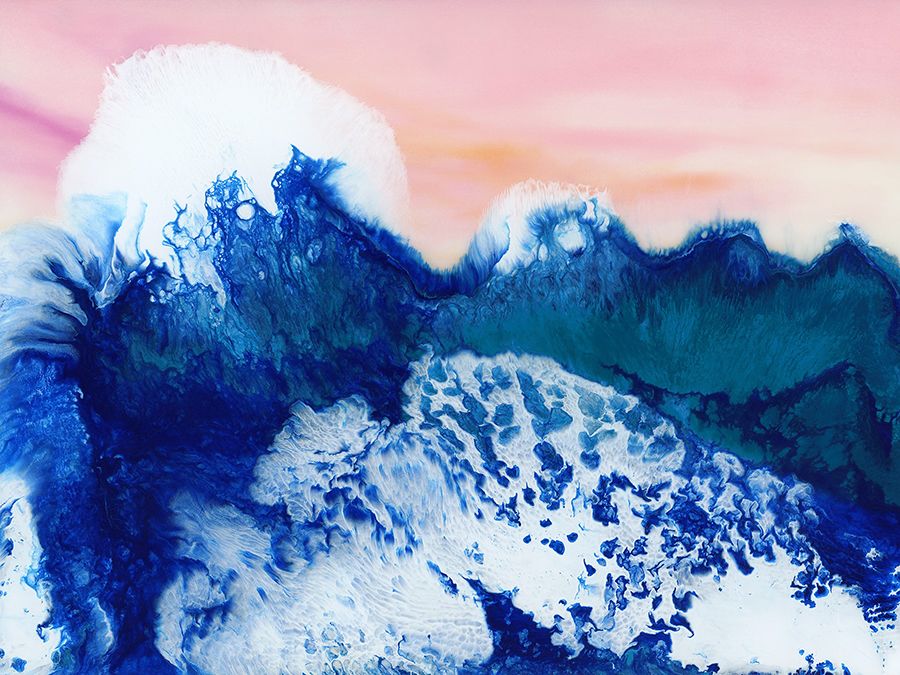
Death of a Landscape No.5, Edition of 5, Lucy Carty, Hahnemühle Pearl Giclée.
Death of a Landscape No.5, Edition of 5, Lucy Carty, Hahnemühle Pearl Giclée.
In this series, Lucy took landscapes she had photographed and sketched in Antarctica and approached each one as a closed system. Once the initial scenes were laid down in pastel and encaustic wax, nothing else entered or left the work - no extra paint, no scraping away. The act of then melting each one with the heat gun and the blowtorch led to entirely new works, despite them being made of the same, original material. The results are ghosts, memories of the landscapes gone before.
Arctic Seascapes
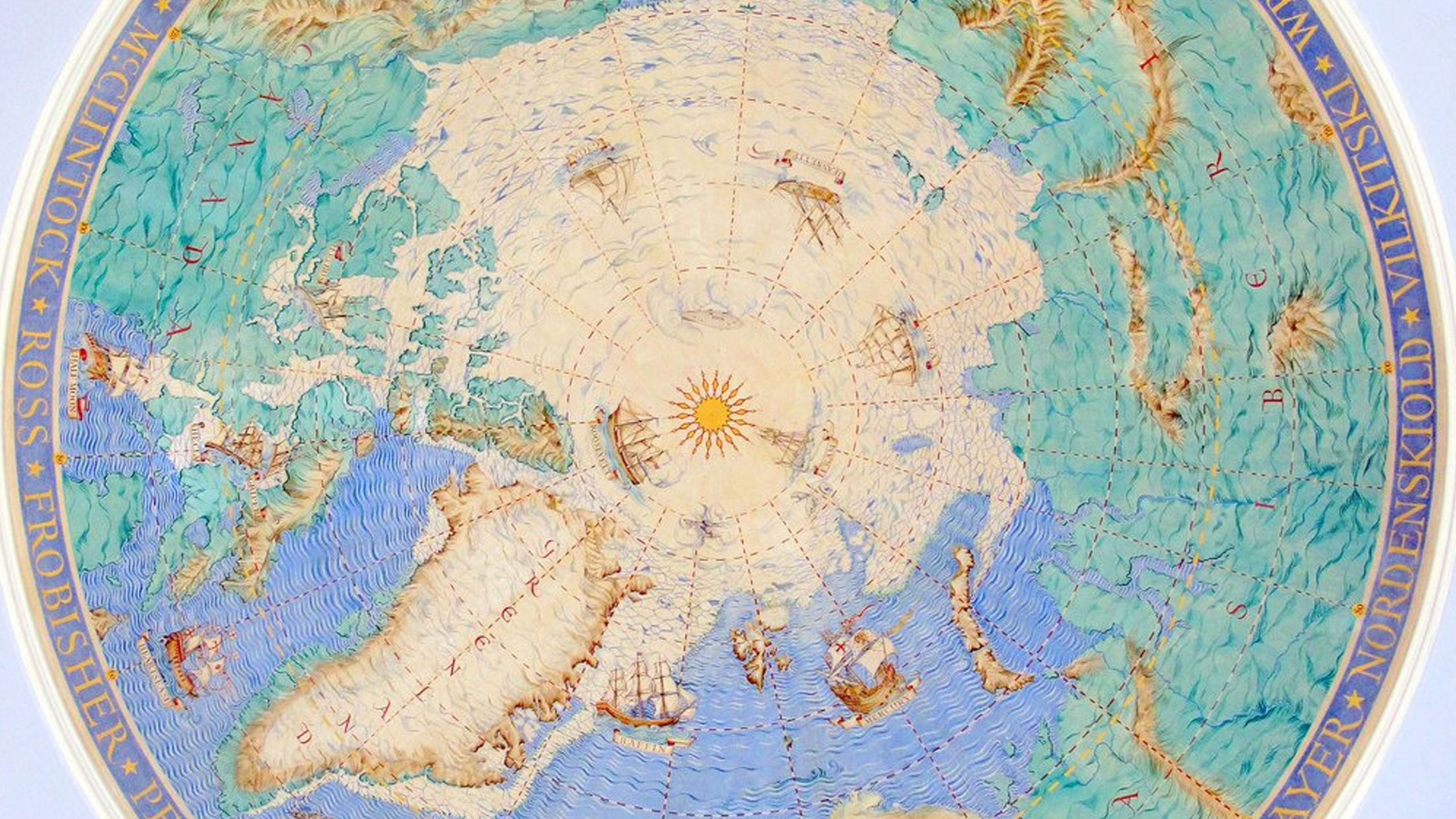
At the heart of the Arctic circle is the polar sea, and unsurprisingly the sea and sea ice have been central to work by a number of our artists.
Lesley Burr's Windblown was made in her studio in Lochgilphead, using sketches and photo footage recorded in 2019 on board CV Resolute. "The painting is part of a series of new oils depicting the movement of the ice, diminishing ice and the sense of spaciousness experienced in arctic landscape."
Nicholas Jones found inspiration in the icebergs he encountered on his time in the Arctic. "I find icebergs extraordinarily beautiful and moving to look at. They seem so composed, dignified, and otherworldly; utterly at ease and wonderfully responsive to the changing light and sky and sea. In our rapidly heating world, they also speak poignantly of immense forces that are often so very hard for us to grasp and comprehend."
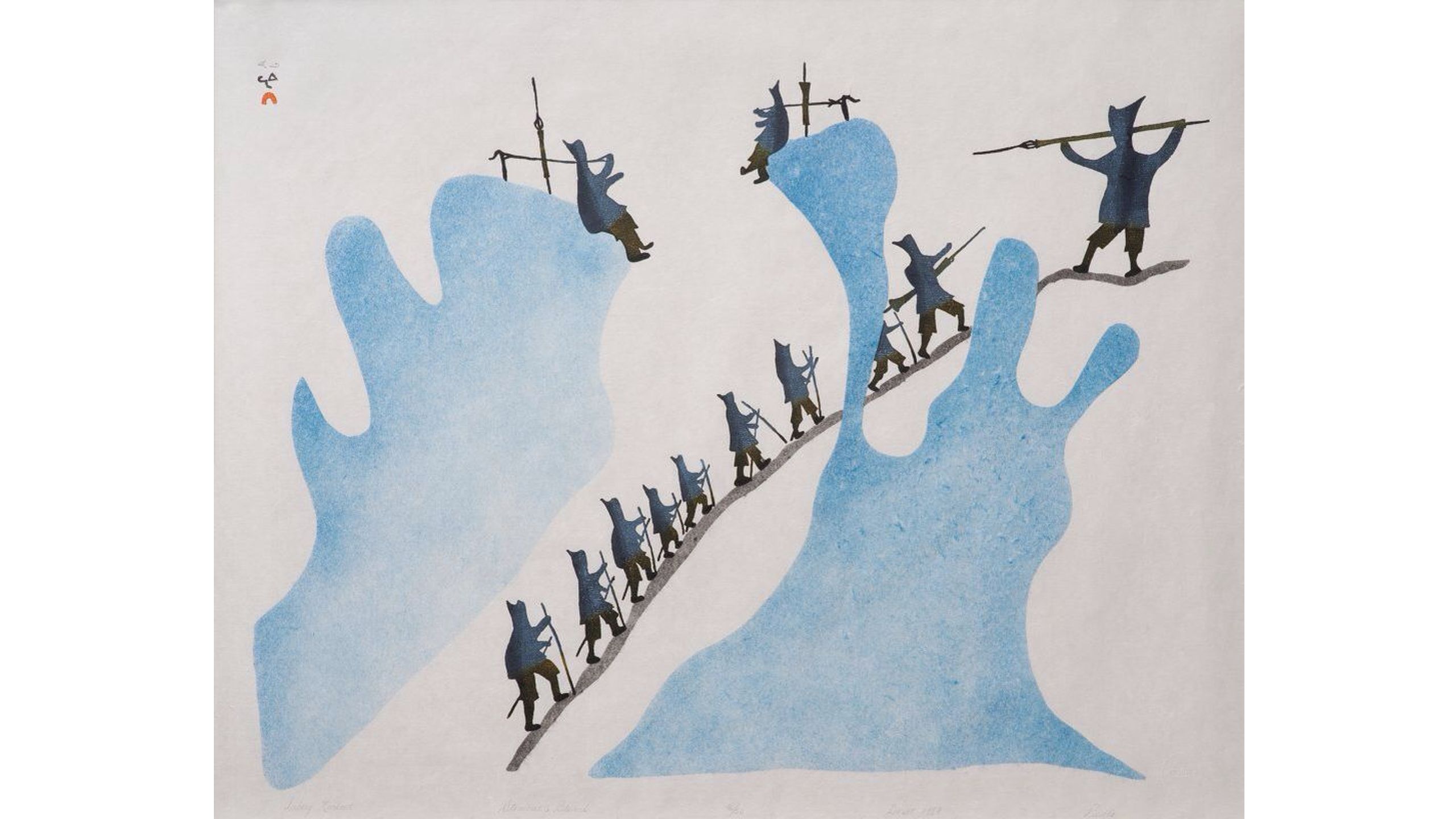
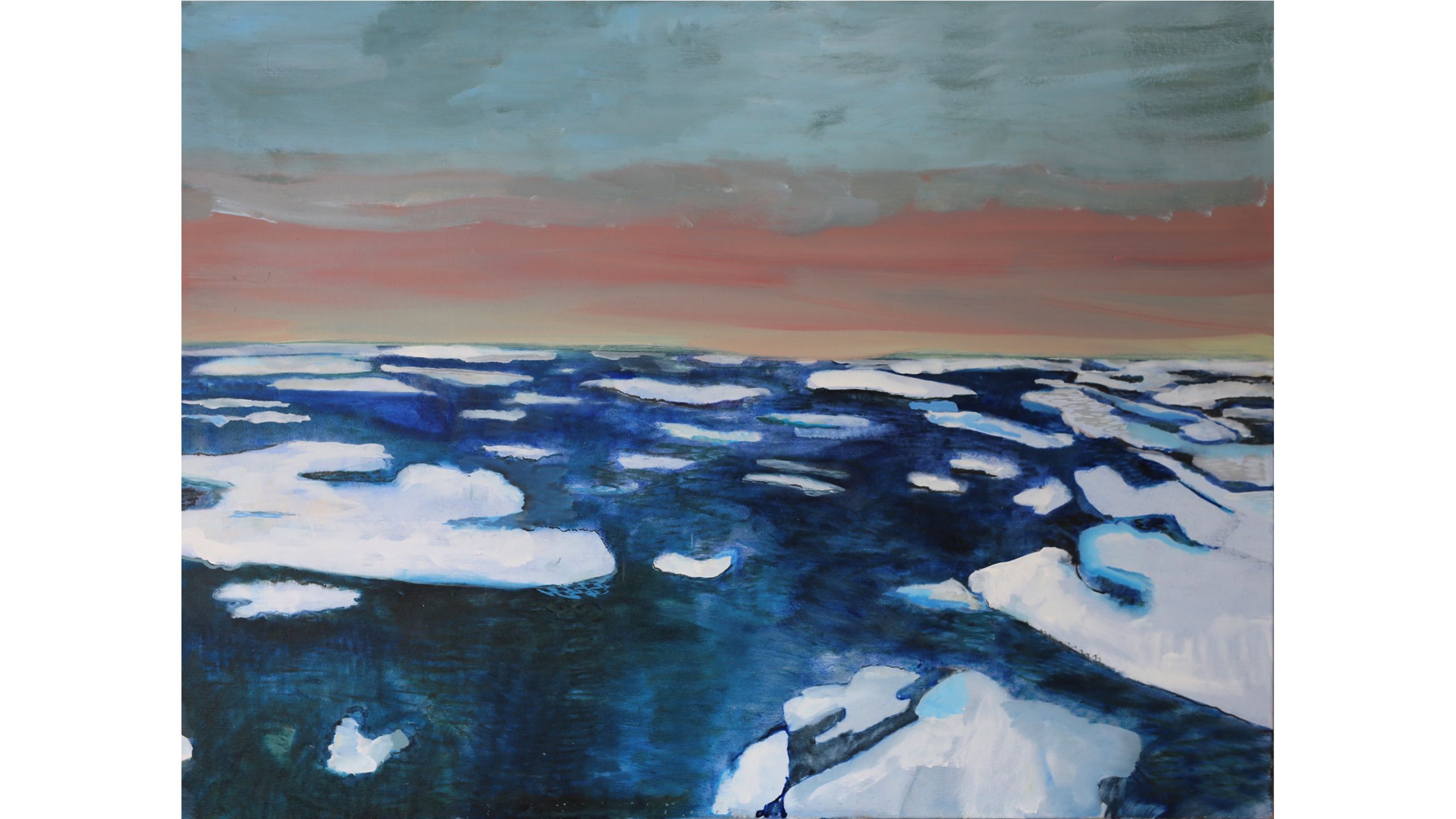
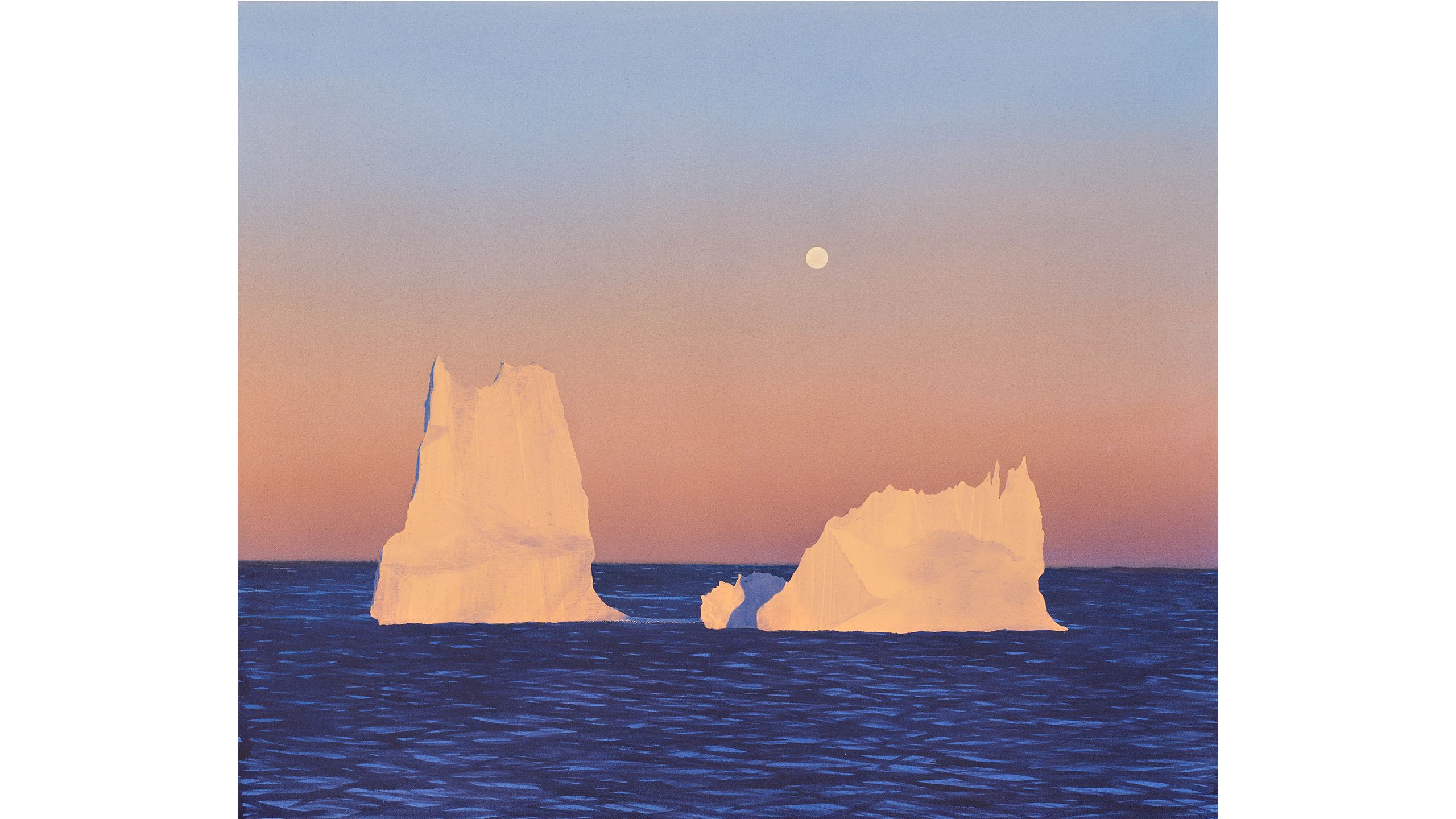

Iceberg lookout, Pudlo Pudlat, 1987. Stonecut and stencil on paper. Y: 2010/10/2
Iceberg lookout, Pudlo Pudlat, 1987. Stonecut and stencil on paper. Y: 2010/10/2

Windblown, Lesley Burr, 2020. Oil on canvas.
Windblown, Lesley Burr, 2020. Oil on canvas.

Icebergs and Moon, Ilulissat, Nicholas Jones, 2019, acrylic on canvas.
Icebergs and Moon, Ilulissat, Nicholas Jones, 2019, acrylic on canvas.
Portraits
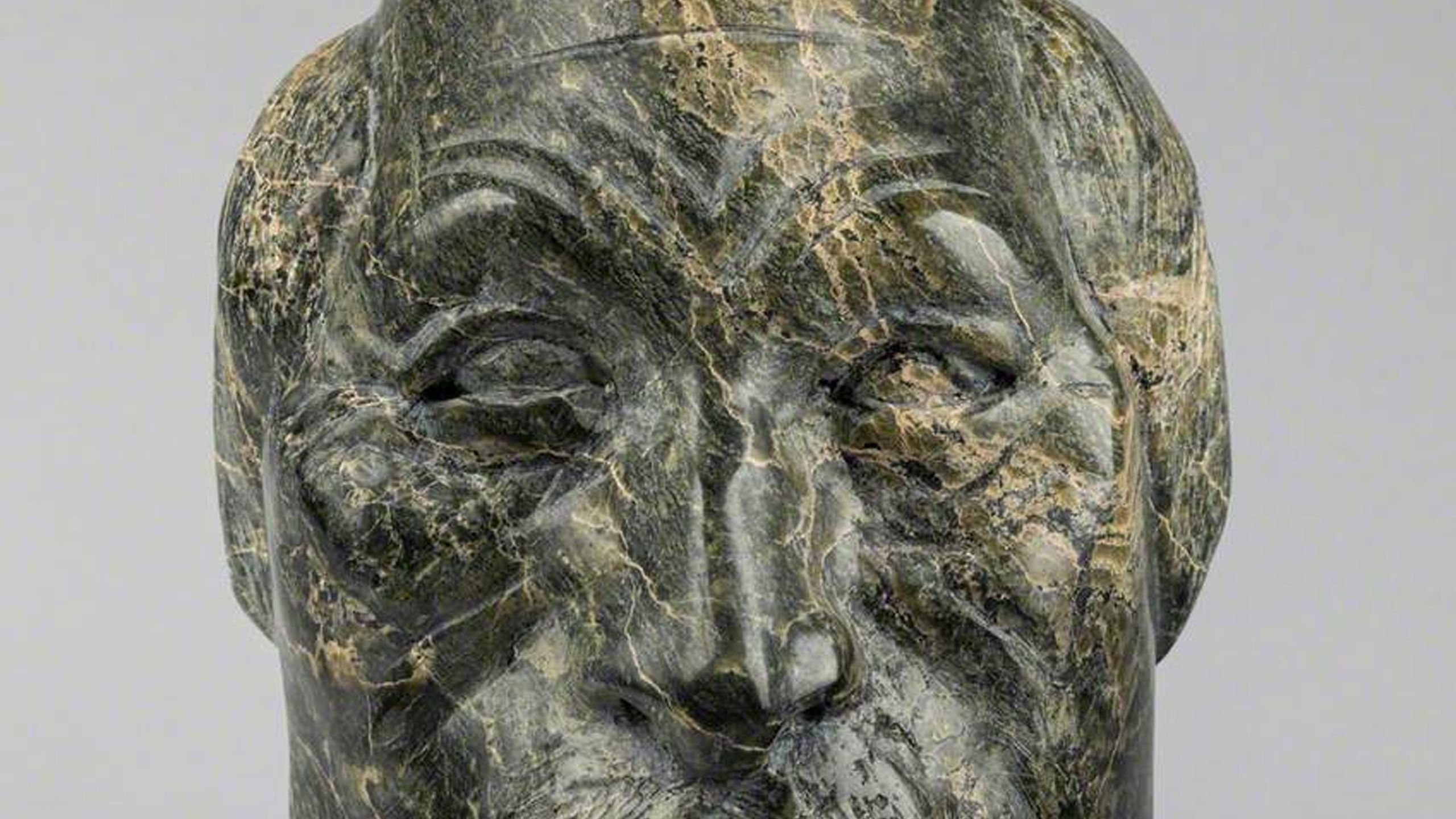
Julian Grater spent the early part of 2020 in Greenland making a number of portraits of Greenlandic Inuit. His work depicts people from a range of backgrounds, from fellow artists and craftspeople, to representatives of the Inuit Circumpolar Council, educational consultants and advisors, truck drivers, hunters and fishermen.
Julian's work is reminiscent of some of the portraiture in the Polar Museum's collection. The most striking similarity is with Isobel Wylie Hutchison's piece, Regina, a grandmother of Greenland, made in the early 20th century and sharing the same deliberate stare out of frame.
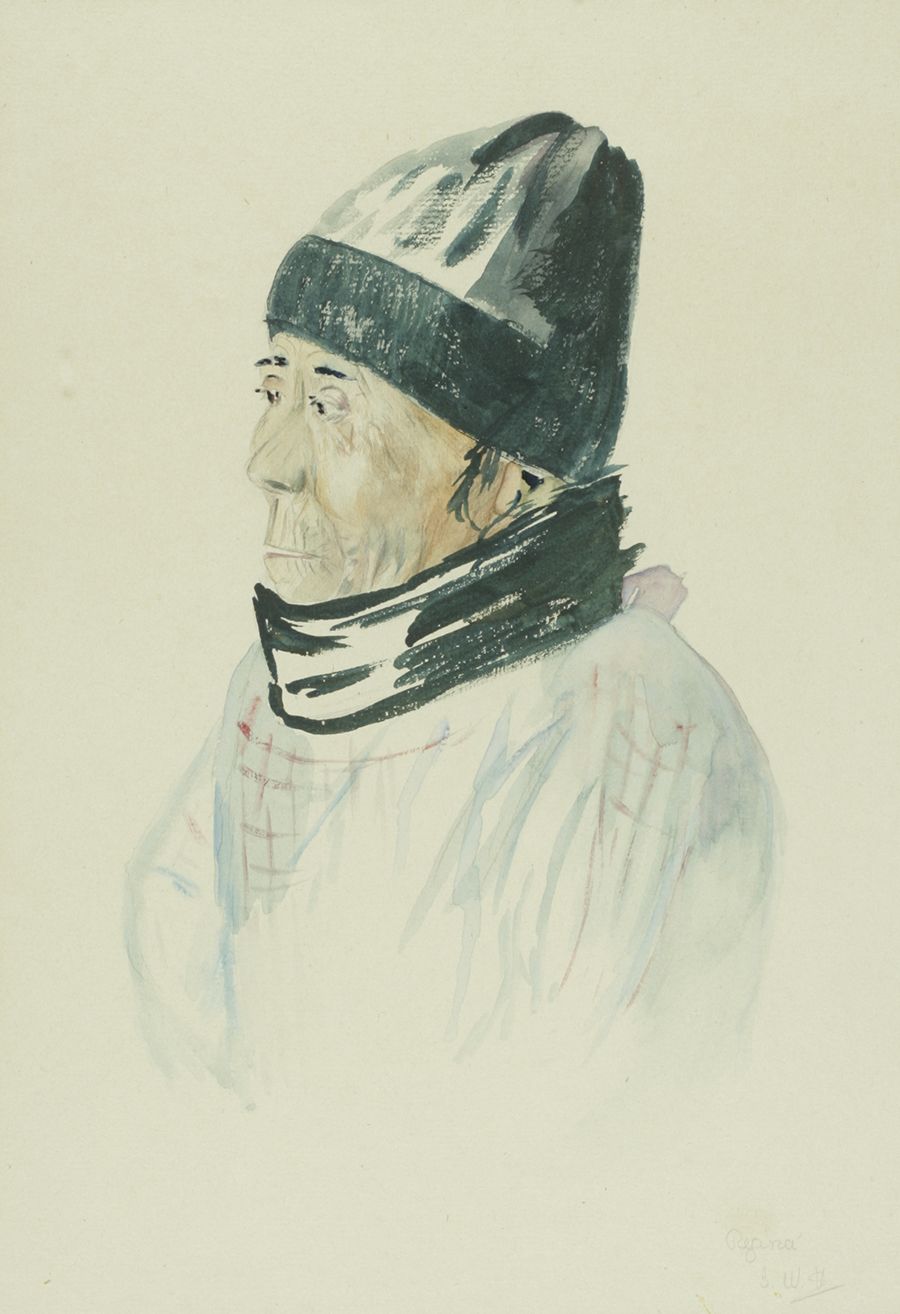
Regina, a grandmother of Greenland, Isobel Wylie Hutchison, undated (early 20th century), watercolour. Y: 84/6/1 .
Regina, a grandmother of Greenland, Isobel Wylie Hutchison, undated (early 20th century), watercolour. Y: 84/6/1 .
Zsuzsanna Ardó's Polar self Portrait project invited artists from all over the world to imagine themselves at the North Pole and make a self portrait as if they were there. Of her own self portrait, and the experience that led her to it, she writes:
Breathtaking… ! Deep curiosity embraced by visceral fear guides the eyes, concentrates the mind, tenses the body. My eyes survey the icescape for polar bears. Flurry of breath and gaze zig-zag between the art installation I’m creating on the ice and the icy horizon. The adrenalin tonic ripping through my body evaporates when, safely back on the tall ship, I finally spot one. A yellowish, skinny body walking along the ridge. Resolutely. Not curiosity or fear, but a singular sense of connectedness reverberates through my arteries. Bears in my Eyes, a series of polar self-portraits, is a testimony to that moment of inspiration. That bear entered my body to meet you through my eyes. Frozen in motion. In my pupils. We are one. That bear continues to stare at you whenever you lay your eyes on mine.
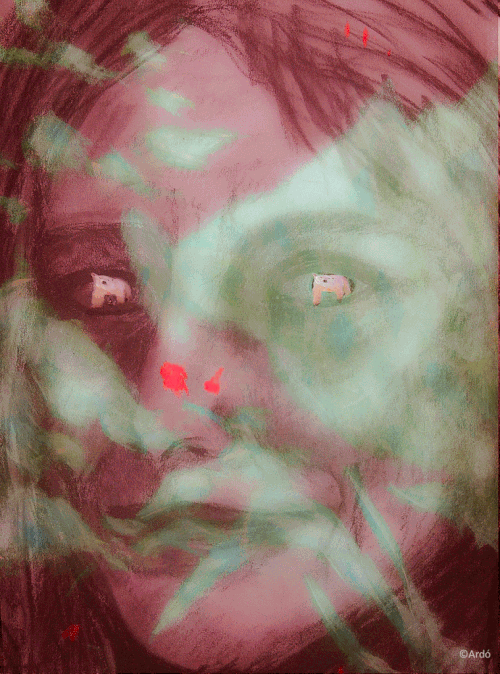
Bears in My Eyes, Zsuzsanna Ardó , digital animation.
Bears in My Eyes, Zsuzsanna Ardó , digital animation.
Christine Finn also produces a self-portrait, this time in words and images. In her spoken narrative she reflects on her time in the North, and her current pandemic-enforced stillness in her current home in Paris.
Antarctic Seascapes
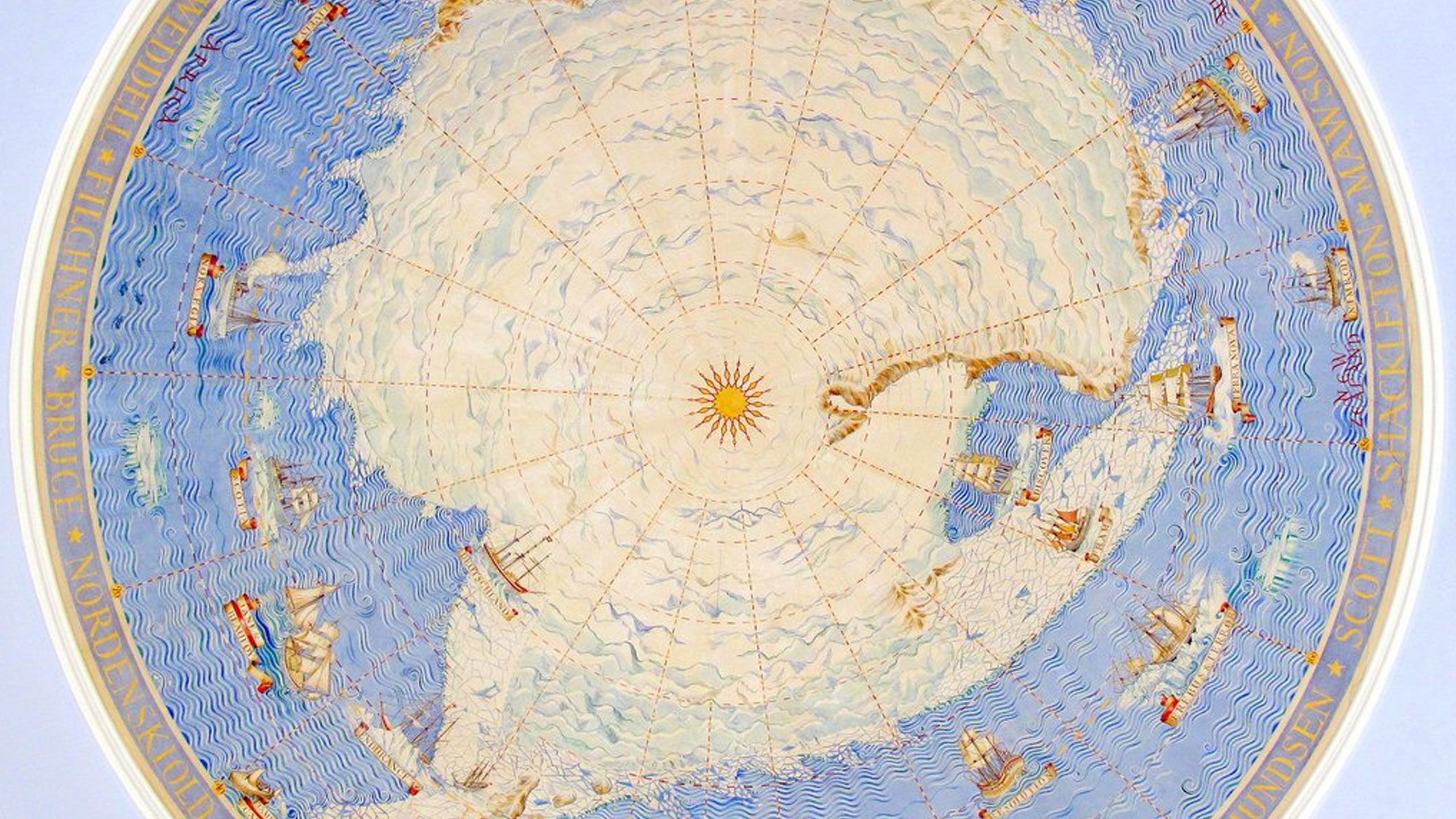
Each of the artworks in this section is made by a former Friends of SPRI Antarctic Artists in Residence. The residency takes place on board the Royal Navy patrol ship, currently HMS Protector. Many of our artists remark that there's a particular challenge in capturing the Antarctic coastline on a moving ship, before it slips away.
Emma Stibbon and Nicholas Romeril both offer powerful interpretations of the coastlines they encountered. Emma comments, "I made Ice Cloud, Antarctica in response to the pristine snowfields and atmospheric effects of the Antarctic Peninsula. I printed the dark mountain and then added watercolour washes to suggest the softer sky and snow areas. I left the paper white to suggest the cloud hanging off the peak." While Nicholas Romeril remarks, "One of the most remarkable and deceptive visual illusions of the Antarctic is the scale. In A Blue Berg, the small blue berg floating in front of the glacier is the size of a three storey building. The glacier is about 1000 meters high."
Dafila Scott's Shimmering Iceberg is contrasted against a strongly colourful backdrop. For many of the artists who visit Antarctica, the richness and depth of the colours they encounter in nature is a pleasant surprise.
Andrew Lansley had imagined himself in colder climes for some time before his residency. "Even before I knew I was going to Antarctica, I had started painting pictures of ice. Mostly marine paintings concerning the weather, and by coincidence I seem to have found myself visiting places that chimed with the shipping forecast. And so, like all great journeys, this started out initially as a journey of the mind... First Ice was painted before my journey, and exactly matched my first sighting of the ice when we emerged on the southern side of the Drake’s Passage. It is a meeting of fact and fantasy. The fact won me over, but the fantasy was the inspiration that got me there."
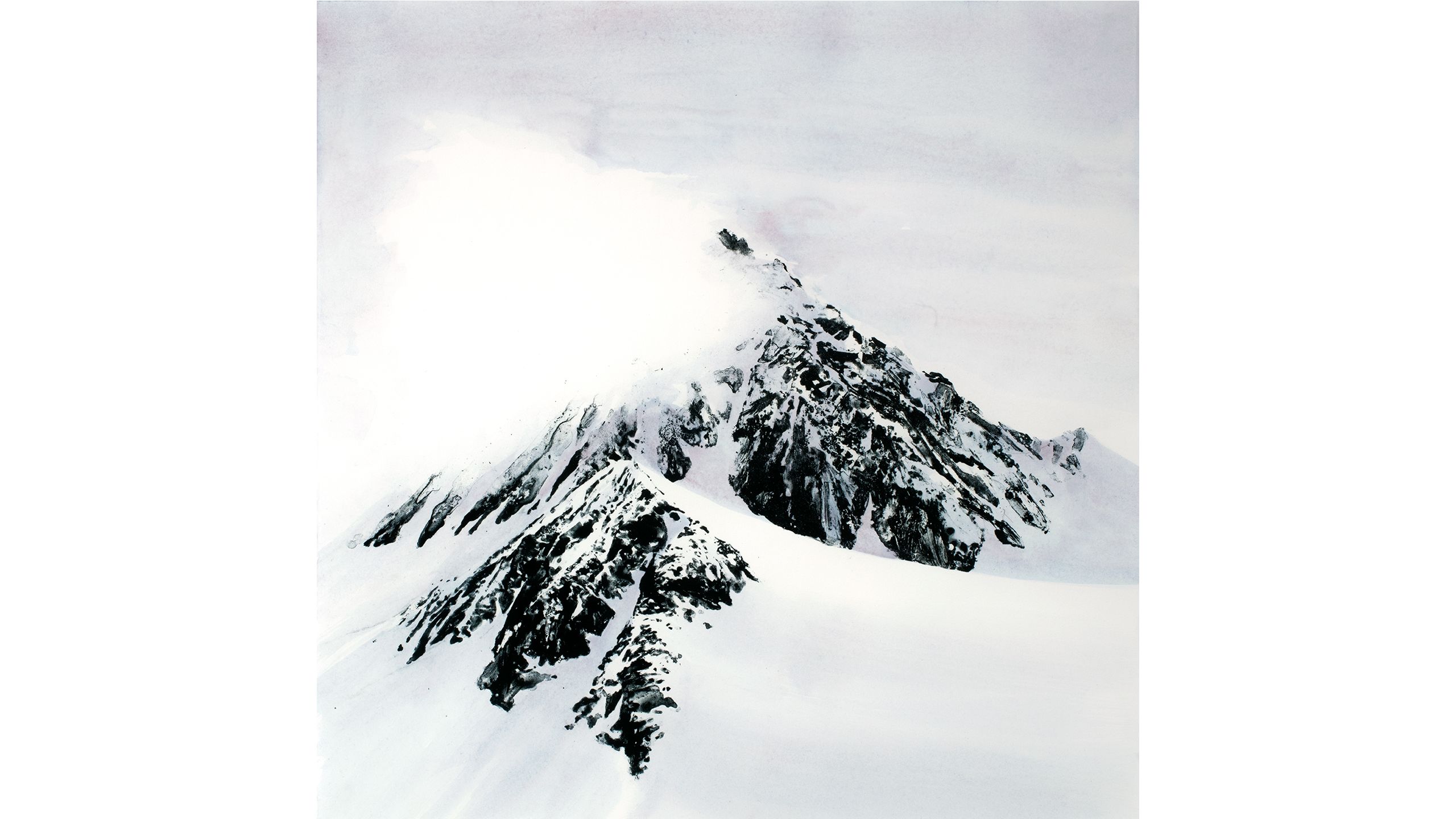
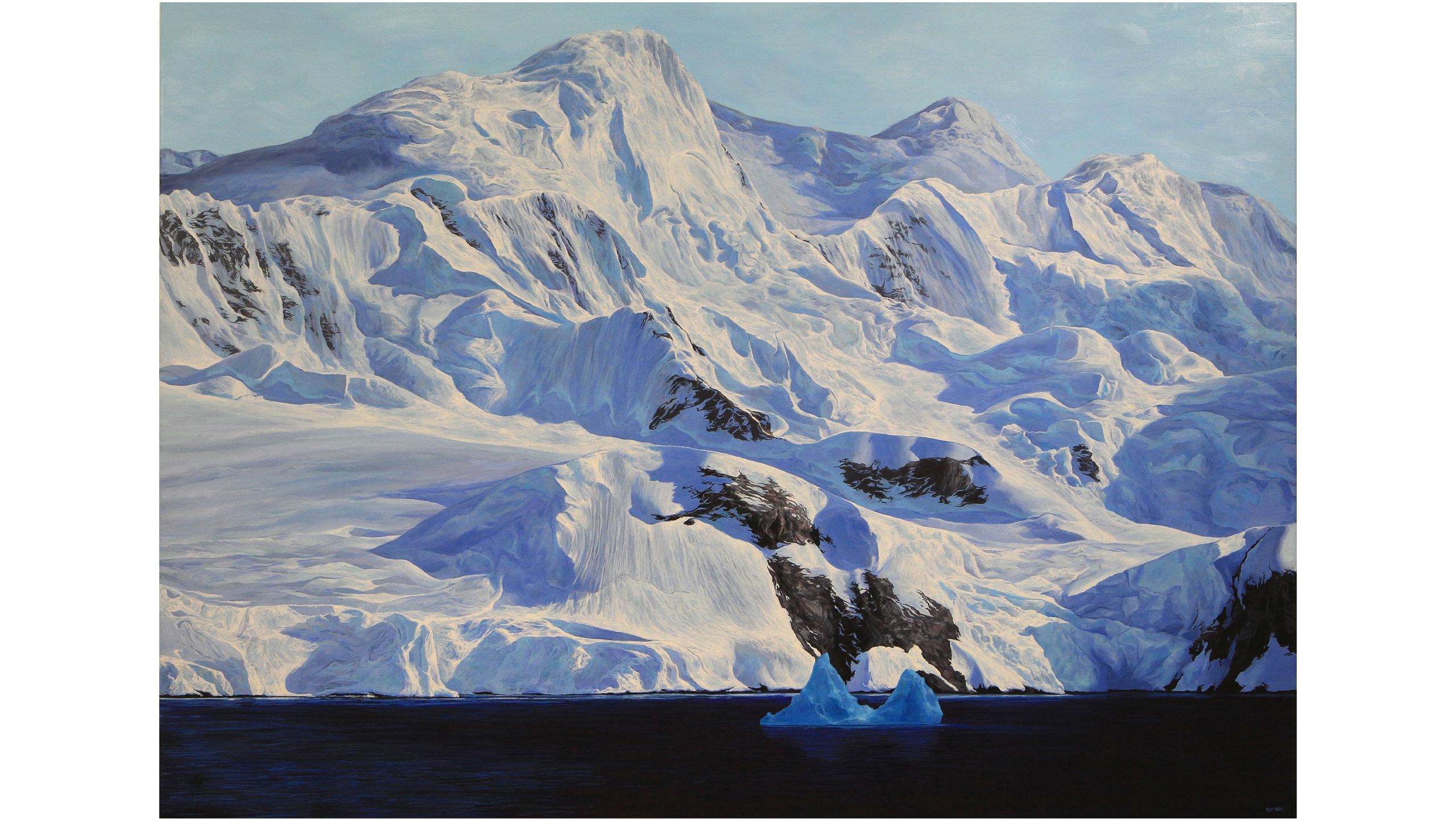
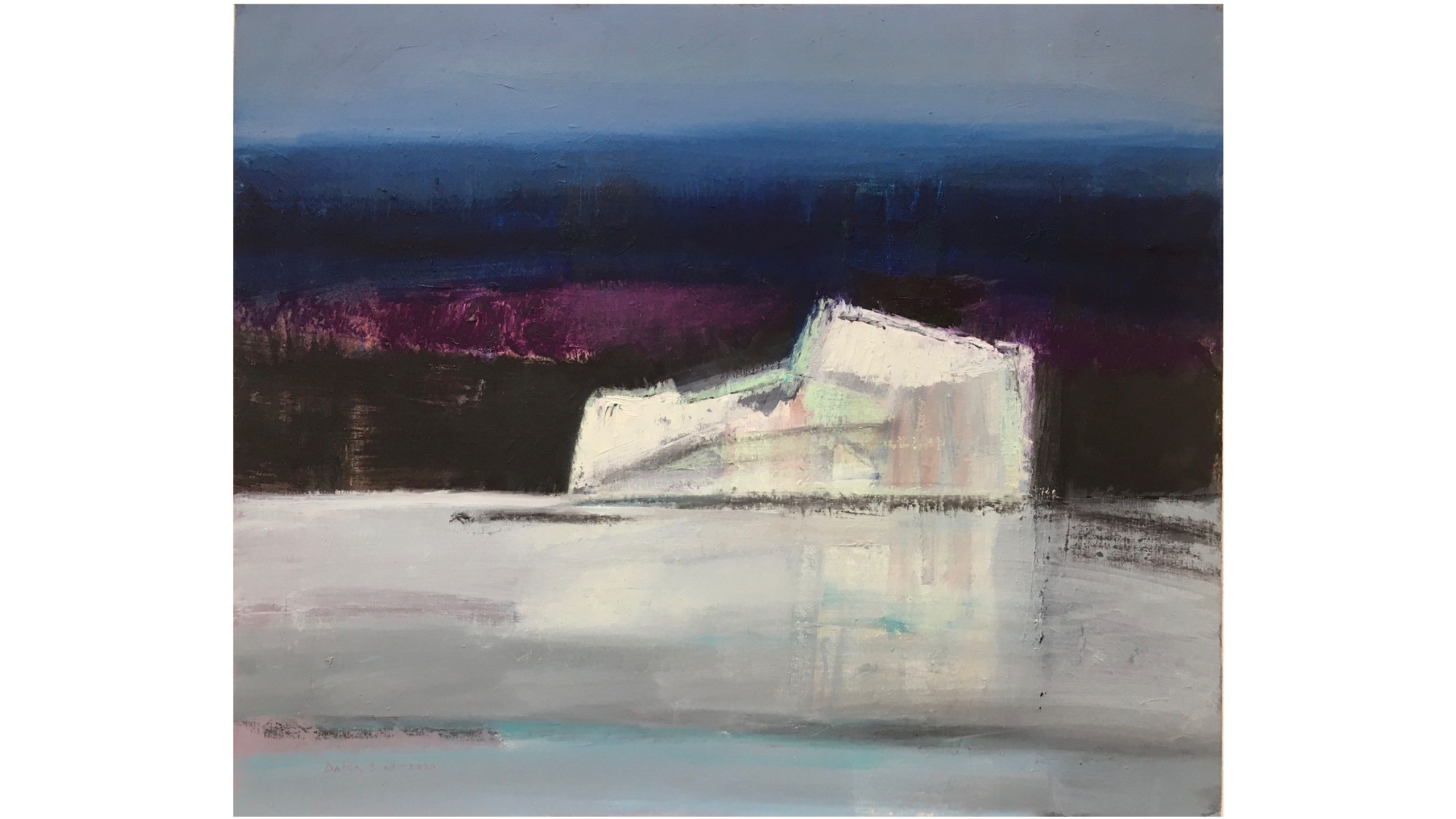
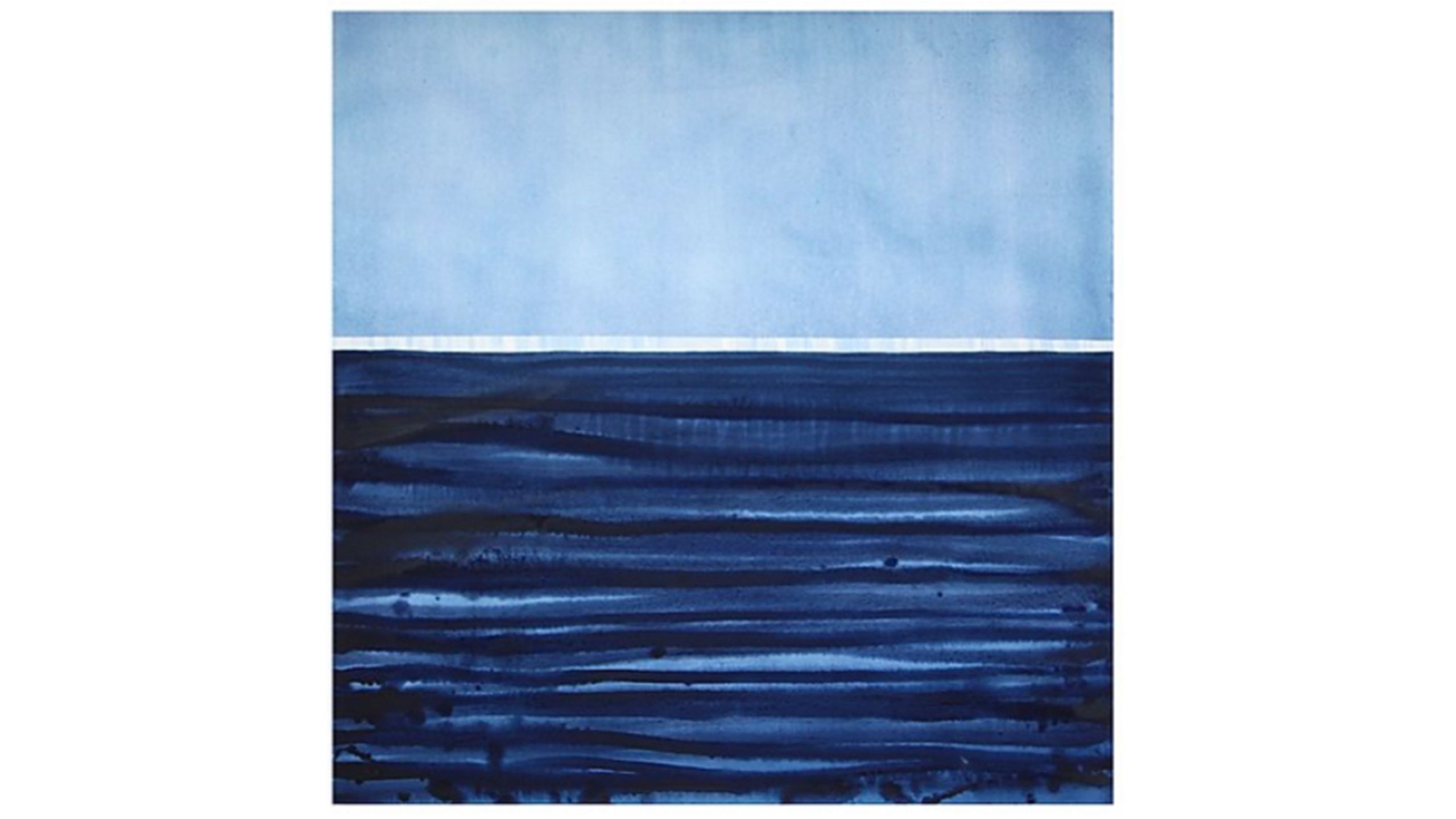

Ice Cloud, Antarctica, Emma Stibbon, 2019, Intaglio with hand colouring.
Ice Cloud, Antarctica, Emma Stibbon, 2019, Intaglio with hand colouring.

A Blue Berg, Nicholas Romeril, 2019, oil on linen
A Blue Berg, Nicholas Romeril, 2019, oil on linen

Shimmering iceberg, Dafila Scott, oil.
Shimmering iceberg, Dafila Scott, oil.

First Ice, Andrew Lansley
First Ice, Andrew Lansley
First sight of Antarctic Land. Mt Sabine. New Years Day. 1911.
When Sarah Airriess was looking for a good way to end the first volume of her graphic novel adaptation of Apsley Cherry-Garrard's famous account of Captain Scott's expedition, The Worst Journey in the World, she read his account of being woken to see his first view of Antarctica. The text was powerful, describing a shining mountain rising above the fog bank. But even better was when she came across Cherry's own drawing of the view in one of his sketchbooks.
Sarah has reinterpreted Cherry's drawing as the last page of her opening volume. As well as the seascape with distant mountains, we have a birds eye view of the men on the expedition enjoying the sight from the deck of Terra Nova.
Preservation and Peace
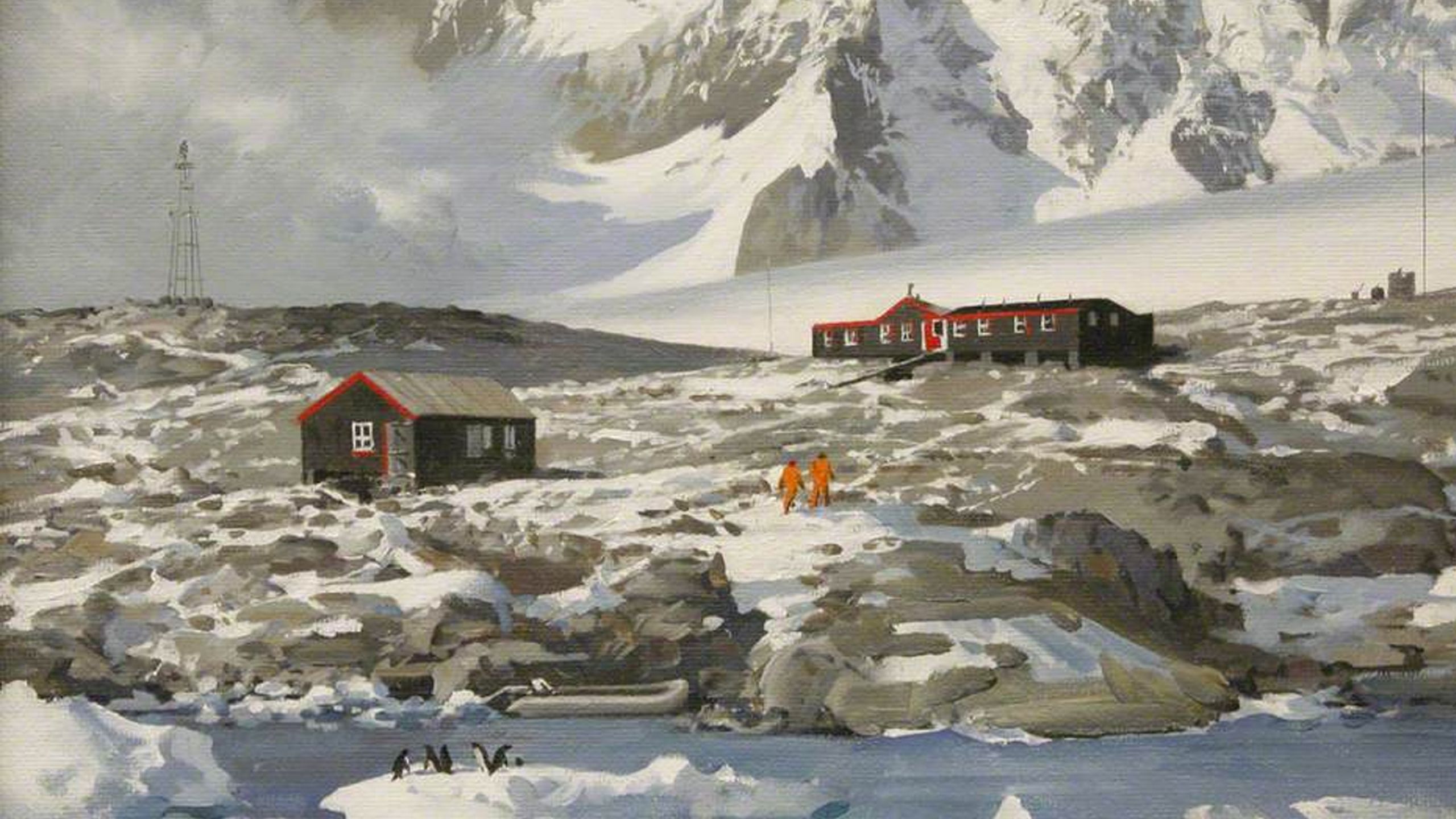
The sub-Antarctic island of South Georgia was a base for the whaling industry in the early twentieth century. For a few decades, a heavy industry of 'tryworks' developed across seven whaling stations on the island. When the industry was collapsed and was outlawed, the stations were abandoned. The island of South Georgia is now a wildlife haven, and the whale populations are recovering. However, relics of the island's whaling history still remain.
These two ships have become an iconic image of Grytviken, South Georgia, being the first sight you see when approaching the ruins. They have beautifully curved sterns which are idyllic subjects for drawing powerful compositions. It's a delight to revisit memories of my incredible experience, so I'm still more than happy to take commissions.
Theo isn't the only one of our artists drawn to relics and historic finds. John Kelly's piece, Southern Forensics, was produced during his British Antarctic Survey Fellowship, and presents finds accompanied by notebook sketches and photographs.

Southern Forensics, John Kelly, 2004, photographs, drawings, bone and feather, wood.
Southern Forensics, John Kelly, 2004, photographs, drawings, bone and feather, wood.
The Antarctic environment and it's extraordinary sense of isolation activates more than simply a visual response. All senses feed into the work with journal drawings, storylines, sound tracks, and even temperature changes.
Since 1959 Antarctica and the surrounding seas have been protected by the Antarctic Treaty. The Treaty was signed on 1 December 1959 by twelve nations that were active on the continent, and who agreed to maintain Antarctica as a natural reserve, devoted to peace and science. In the decades since then, many more nations have joined, and many more protective conservation protocols have been added. The Antarctic Treaty System helps to conserve the seas around Antarctica as well as the continent itself, making Antarctic waters a haven for wildlife.
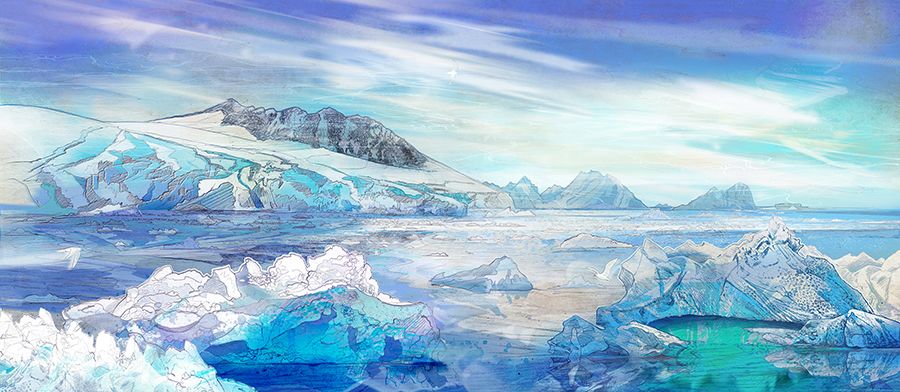
Glacial Monuments, Shelly Perkins, 2020, digital collage
Glacial Monuments, Shelly Perkins, 2020, digital collage
This sweeping landscape scene champions the incredible beauty of ice. It explores the concept of ice as a reverential symbol of the natural world but also as a monument to our diminishing glaciers. When icebergs shear off glaciers it is often referred to as 'calving'. This very physical description implies new birth and in a way the creation of icebergs is almost like a sculptor chipping a crude lump of stone out of a block, ready to begin a masterwork. Over time the material will be honed into a thing of beauty, much like an iceberg. They ultimately become fine works of art, chipped and worn away by wind and water before melting into the blue. Their existence is transitory and increasingly too fleeting.
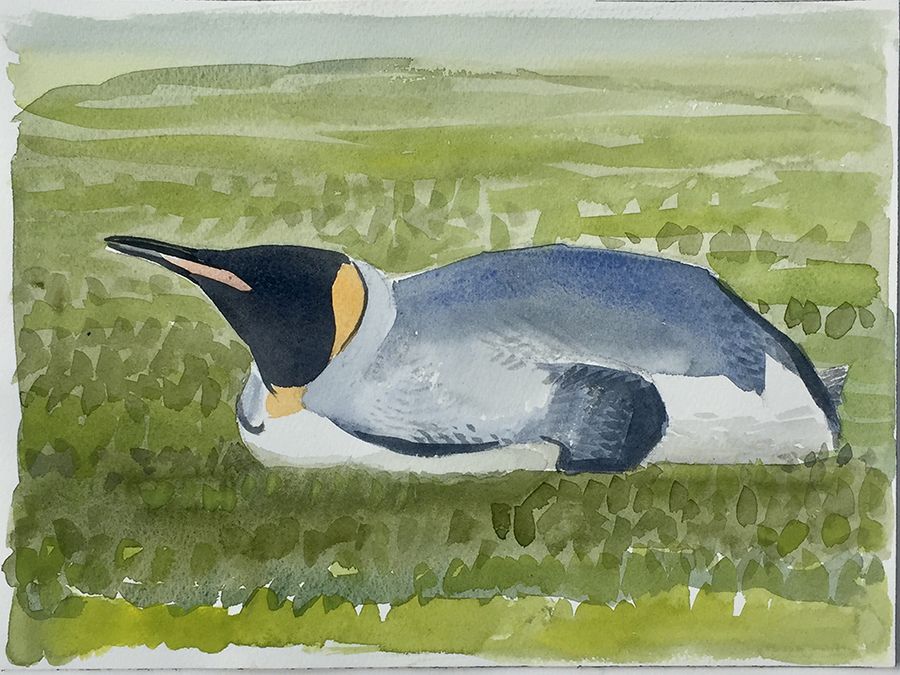
King Penguin Study, Darren Rees, watercolour
King Penguin Study, Darren Rees, watercolour
Darren Rees's study of a king penguin gives us a glimpse of one of Antarctica's best loved inhabitants. Their habitats in Antarctica and the sub-Antarctic regions is protected by the Antarctic Treaty.
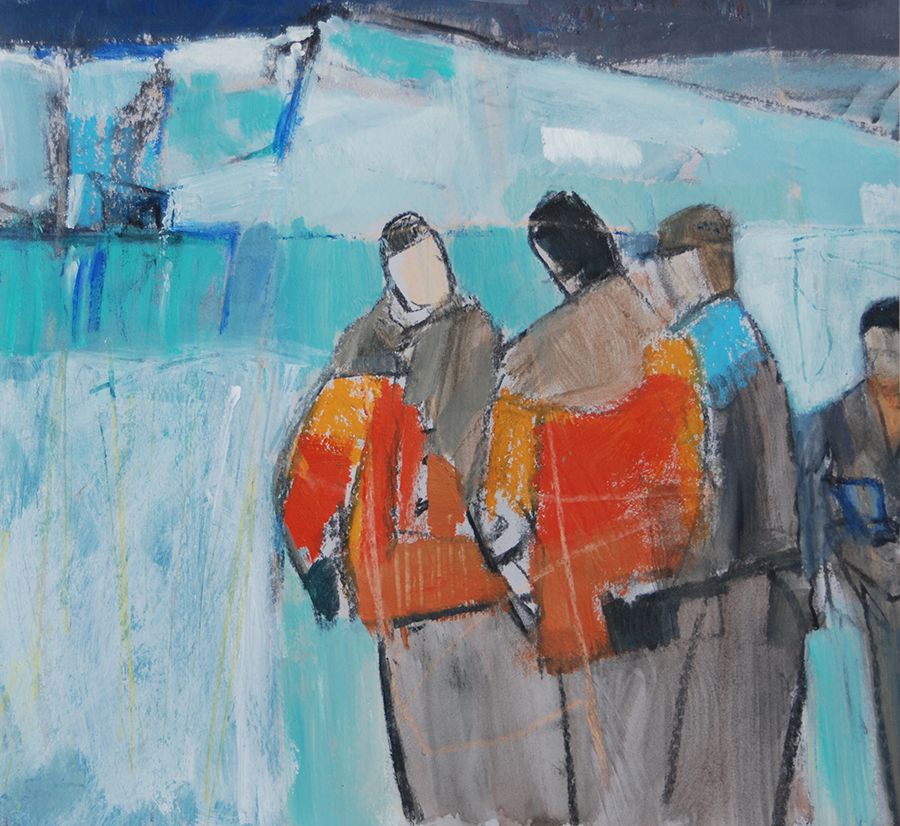
International Collaboration in the Antarctic, Dafila Scott, mixed media. Polar Museum collection, Y: 2016/3
International Collaboration in the Antarctic, Dafila Scott, mixed media. Polar Museum collection, Y: 2016/3
The Treaty encourages international collaboration, which in turn makes it possible for organisations like the Scott Polar Research Institute to do their work effectively and for international agreements to be reached that protect wildlife. Collaboration continues to be one of the most powerful tools we have in the polar regions.
Visit the Big Freeze Art Festival website to find out more about the artists taking part in this exhibition and other parts of the festival.

